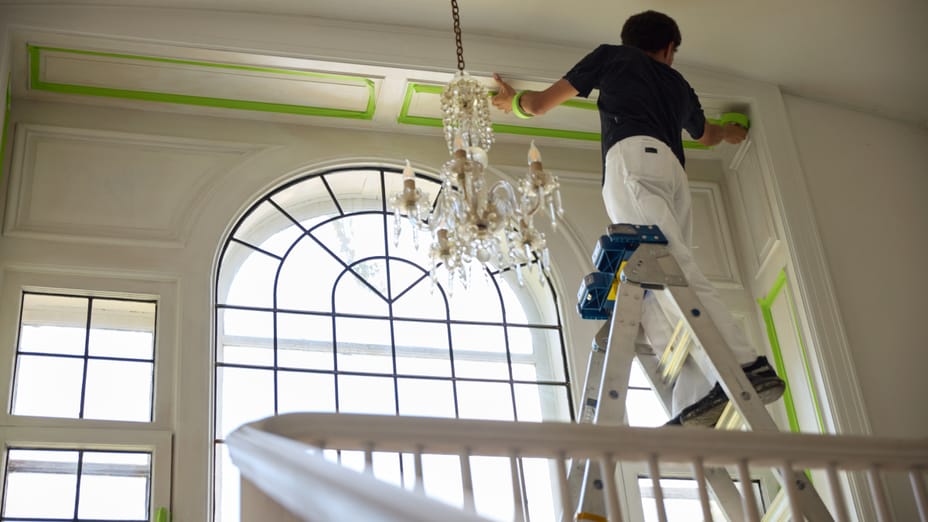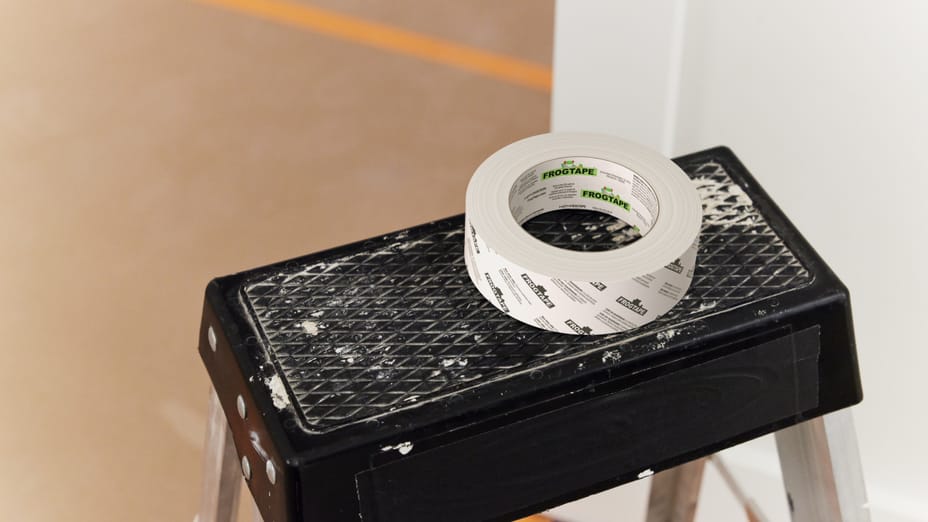Beyond Basics: 8 Advanced Techniques for Painter’s Tape
As a professional painter, you’re no stranger to the basic dos and don’ts of painting. But are you familiar with these advanced techniques? Whether you're layering colors or using painter’s tape on difficult surfaces, these insights will help you achieve great results on every project.
For more tips and techniques that will help you grow in your painting career, check out our Rookie Painter’s Handbook.
While many pros frequently skip tape, there are situations where cutting-in isn't enough. Some areas in a home require the use of painter’s tape for professional results. For example, when creating patterns or working on detailed trim and molding, tape is the best way to achieve professional edges and clean lines. Even more, painter’s tape is often necessary for protecting surfaces from accidental splatters — it’s a great safety net to rely on when working on high-stakes projects.
Let’s look at some situations where using tape is essential:
1) Protection from Paint Splatter
When working with unpainted baseboards that are stained and varnished, or even painted baseboards that don’t have a new coat on the calendar, it's important to be cautious of paint splatter. Here's how to protect your surfaces efficiently:
- Prevent Splatter: Instead of sanding off specks later, run painter's tape over the top of the baseboards to prevent roller splatter or late-forming runs from settling, saving you time and effort later.
- Manage Overspray: If you’re using a paint sprayer, painter’s tape helps manage overspray and protects nearby surfaces.
- Apply tape to trim and window frames to create a barrier that catches stray paint particles, ensuring these surfaces stay free from unintended paint.
2) Paint Patterns Using Tape
Whether you’re working on a trendy painted arch or a project involving intricate patterns — precision, patience and painter’s tape is the key combination for a great outcome. Here are a few pointers to achieve pro results:
- Design Mapping: Map out designs with a light pencil outline.
- Work Carefully: Focus on one section at a time, allowing the paint to dry completely before moving on to the next.
- Press Down Firmly: Ensure a tight seal on all edges to prevent paint bleed.
3) Layering Colors and Achieving Crisp Edges
Many wall paint design ideas with tape involve layering multiple colors — which requires attention to detail to maintain sharp edges. Follow these steps for a flawless finish:
- Ensure Dry Base: After applying your first layer of tape and painting your base, make sure the paint is dry to the touch before applying more tape.
- Prevent Bleed-Through: When adding the next layer of tape, press down firmly along the edges to prevent paint bleed-through.
- Pick the Ideal Tape: FrogTape® Delicate Surface Painter’s Tape, with its lower adhesion level and exclusive PaintBlock Technology, is ideal for these projects. It's gentle on the base layer of paint while simultaneously creating a barrier to stop paint from seeping under the tape, leading to crisp lines and less stress.
Overcoming Painter’s Tape Challenges
Painting can often be more complex than anticipated. Sometimes, unexpected challenges pop up like painting textured walls or struggling with tape adhesion. Luckily, there are tricks of the trade that can help you overcome these hurdles in your painting career.
4) Prepping for Perfect Lines
Paint bleed-through is a major pain point among painters; however, there are steps you can take during the prep phase that will set you up for success. If you’re aiming for perfect lines, apply these methods:
- Seal the Tape: Start by applying a very light coat of paint to seal the tape. This prevents paint bleeding and sets the stage for clean, crisp edges.
- Activate PaintBlock Technology: If you’re using FrogTape, gently wipe the tape edge with a wet cloth after application. This activates FrogTape’s PaintBlock Technology, effectively sealing the tape and giving you peace of mind.
5) Clean Lines on Textured Surfaces
Taping and painting surfaces like heavy-grained wood and textured walls can be challenging due to adhesion issues. However, with the right prep and techniques, you can achieve the pro results you're after. Try these approaches:
- Clean Beforehand: Remove dust, dirt and debris with a brush and mild soap. Let the surface dry completely.
- Choose the Right Tape: Select edge-treated tape specifically for the surface, such as FrogTape® Multi-Surface Painter’s Tape.
- Burnish Thoroughly: Press the tape firmly into the texture using a putty knife or credit card.
- Seal the Edges: Apply a thin bead of clear caulk along the tape edge to prevent paint bleed.
- Brush Strokes: Paint with strokes parallel or away from the tape.
Always test on a small area first, and remove the tape at a 45-degree angle while the paint is still slightly wet. For a detailed guide on using FrogTape® Multi-Surface Painter’s Tape on these tough surfaces, check out these tips to get the job done right.
6) Adapting to Weather Conditions
Undertaking outdoor projects presents unique challenges, particularly regarding weather conditions. To get the best results, keep these tips in mind:
- Use Durable Tape: Use painter's tape rated for outdoor use like FrogTape® Pro Grade Orange Painter’s Tape®. It offers strong adhesion to surfaces such as painted wood trim, vinyl, metal, stucco and concrete, even in hot and humid conditions.
- Prepare the Surface: Make sure the surface is clean and dry before applying tape. Avoid painting during extreme weather conditions, like rain or excessive heat, as these can impact the adhesion and performance of the tape.
7) Surface Prep for Optimal Adhesion
There's nothing more frustrating than carefully applying painter's tape, only to have it lose its grip. This problem often stems from moisture, inadequate surface preparation or improper tape application. Fortunately, there are measures you can take to mitigate this issue:
- Clean and Dry the Surface: Wash the surface and ensure it is completely dry. Use fans, a dehumidifier or open windows to speed up drying if needed.
- Improve Adhesion: Lightly sand tough surfaces to help the tape adhere better.
- Avoid Tape Stretching: Apply tape without stretching it to prevent lifting later.
- Use Quick-Drying Primer: If time is of the essence, a quick-drying primer can prepare the surface quickly without sacrificing adhesion.
8) Avoiding Finish Damage
Preserving the finish of cabinets, trim or other delicate surfaces during painting is crucial. To prevent painter’s tape from possibly damaging these areas:
- Use Low-Tack Tape: Opt for a low-tack tape like FrogTape Delicate Surface Painter’s Tape to avoid damage.
- Remove Carefully: Peel off the tape at a 45-degree angle while the paint is still slightly tacky to prevent lifting the finish.
- Touch Up if Needed: If the tape does pull off some finish, use a small brush and matching paint to touch up the area.
While having the basic skills is essential, mastering advanced techniques for painter's tape is what will set you apart as a pro. Using the right tools and techniques, like FrogTape's range of painter's tapes, can make all the difference in achieving a flawless finish.
For more tips to help you grow in your painting career, check out our Rookie Painter’s Handbook.











